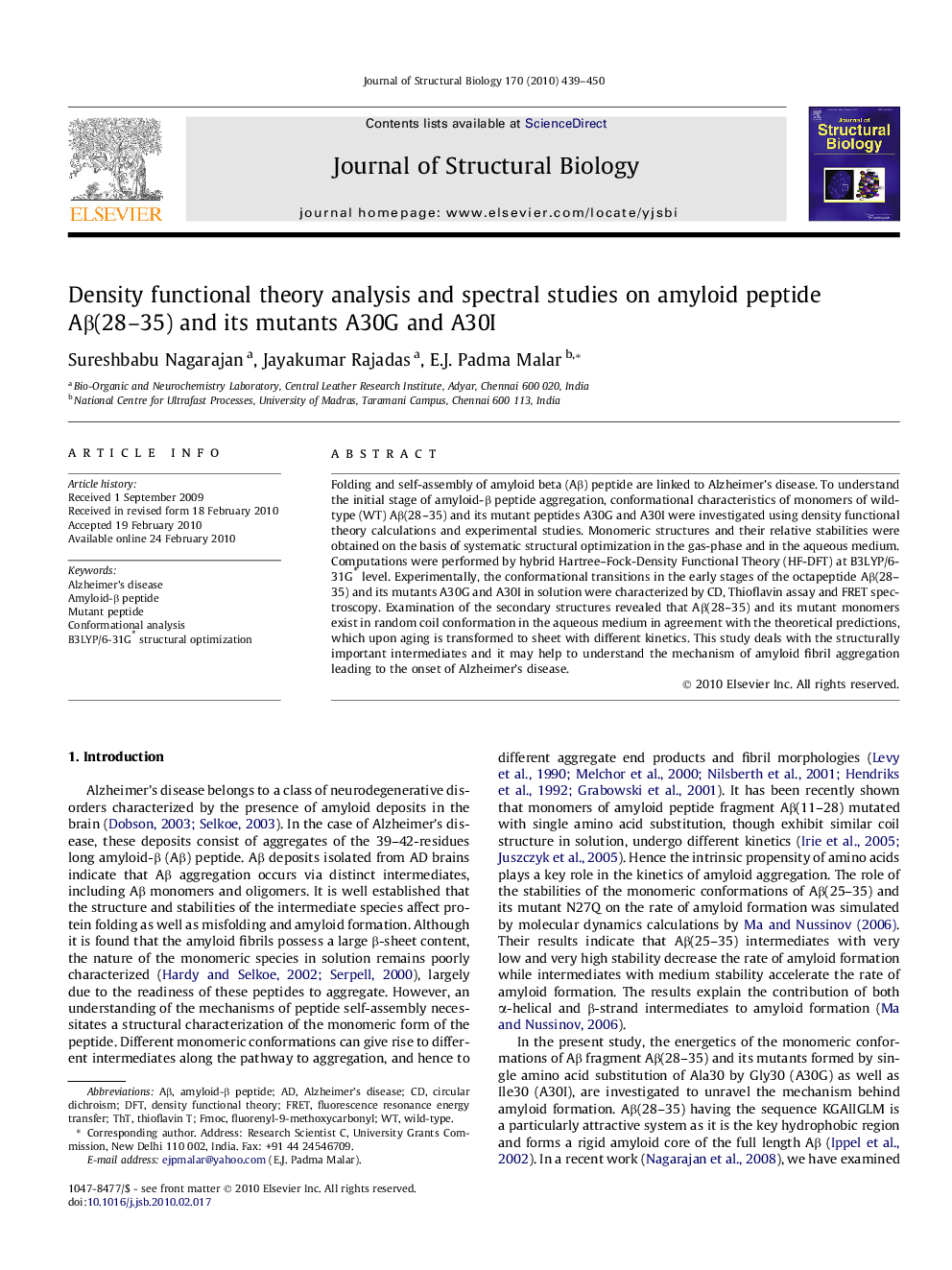| Article ID | Journal | Published Year | Pages | File Type |
|---|---|---|---|---|
| 2828873 | Journal of Structural Biology | 2010 | 12 Pages |
Abstract
Folding and self-assembly of amyloid beta (Aβ) peptide are linked to Alzheimer's disease. To understand the initial stage of amyloid-β peptide aggregation, conformational characteristics of monomers of wild-type (WT) Aβ(28-35) and its mutant peptides A30G and A30I were investigated using density functional theory calculations and experimental studies. Monomeric structures and their relative stabilities were obtained on the basis of systematic structural optimization in the gas-phase and in the aqueous medium. Computations were performed by hybrid Hartree-Fock-Density Functional Theory (HF-DFT) at B3LYP/6-31Gâ level. Experimentally, the conformational transitions in the early stages of the octapeptide Aβ(28-35) and its mutants A30G and A30I in solution were characterized by CD, Thioflavin assay and FRET spectroscopy. Examination of the secondary structures revealed that Aβ(28-35) and its mutant monomers exist in random coil conformation in the aqueous medium in agreement with the theoretical predictions, which upon aging is transformed to sheet with different kinetics. This study deals with the structurally important intermediates and it may help to understand the mechanism of amyloid fibril aggregation leading to the onset of Alzheimer's disease.
Keywords
Related Topics
Life Sciences
Biochemistry, Genetics and Molecular Biology
Molecular Biology
Authors
Sureshbabu Nagarajan, Jayakumar Rajadas, E.J. Padma Malar,
